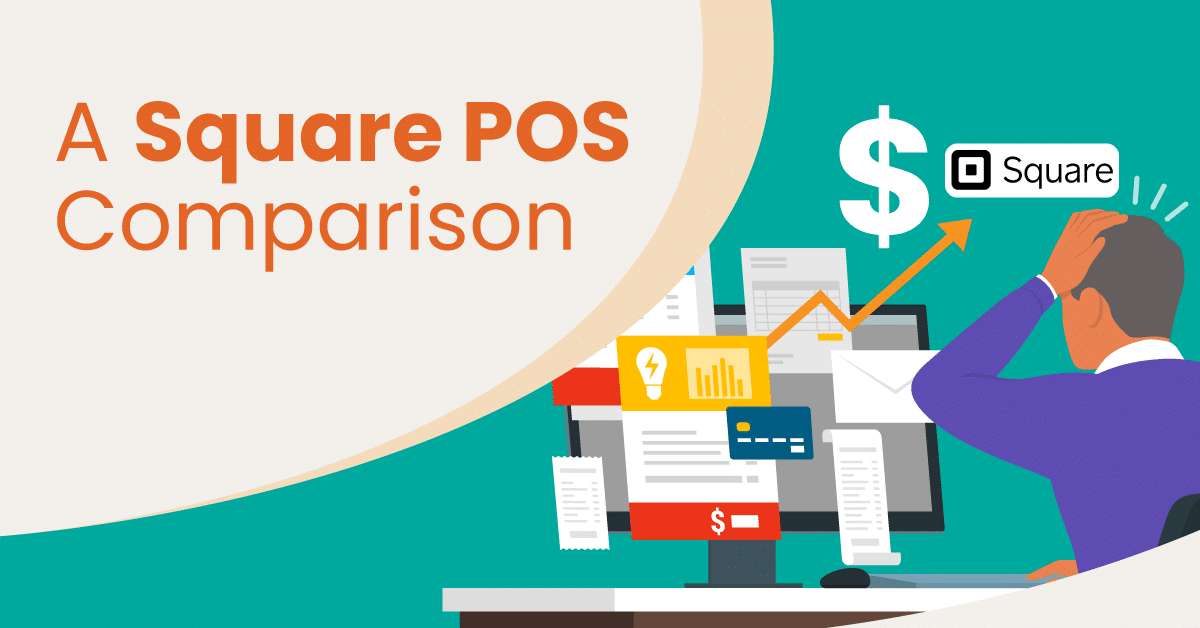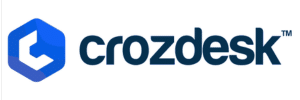While Square is an excellent fit for many small businesses, there are some essential things to consider: Square Transaction Fees.
Square’s high processing fees can be avoided if you know where and how to shop for a new POS.
In this article, we’ll explore the total cost of ownership of Square’s retail POS system and explain why other solutions may be better suited for retailers seeking to maximize their sales while keeping costs low.
We’ll also introduce you to alternative POS solutions, so you can decide which is right for your business.
What Are Square Fees?
Square POS is a popular option for small retailers, as it’s known for its easy setup and low upfront costs. In fact, some versions of Square come with a free POS terminal and extraordinarily low software subscription rates. The service, however, comes with some additional charges that many retailers don’t realize before signing up.
Square is a credit card processor and point of sale provider. The company charges retailers 2.6% + $0.10 per swipe, dip, or tap of a credit or debit card, like Apple Pay and Google Pay. If keyed-in payments are necessary, they charge 3.5% plus $0.15 per transaction — significantly higher than swiped and dipped payments. Additionally, online payments incur an additional fee of 2.9% + $0.30 per transaction.
On top of that, there’s also a $15 monthly fee for each register, and deposit holds may apply to any transactions (higher-risk transactions may also incur additional costs).
Businesses that wish to use POS gift cards must also pay a premium if using Square:
- Starter Pack: $2 per card surcharge
- Quick Cards: $0.99 per card surcharge
- Custom Cards: $0.81 per card surcharge
In addition to the fee Square POS charges for each gift card, a 2.6% + $0.10 processing fee is also charged. All of these fees can add up when using Square POS in a retail environment, causing many store owners to look elsewhere for their POS system needs.
To figure out exactly how much you’re being charged, you can use our credit card processing calculator.
Square Fee Per Transaction
The fees typically comprise a percentage of the transaction amount plus a small fixed fee. The specific rate you pay depends on how the transaction is processed, with different rates for in-person, online, and manually keyed-in payments.
Overview of Square’s Processing Fees
- In-Person Card Payments: 2.6% + 15¢ per transaction for swiped, inserted, contactless, or tap-to-pay methods.
- Online Card Payments: 2.9% + 30¢ per transaction for eCommerce or non-present card transactions.
- Manually Entered or Card-Not-Present Payments: 3.5% + 15¢ per transaction for keyed-in or stored card details.
- Invoices (Card): 3.3% + 30¢ per transaction (or 2.9% + 30¢ with Invoices Plus plan).
- ACH Bank Transfers: 1% per transaction with a minimum of $1 (capped at $10 with Invoices Plus; $0 if deposited into Square Checking).
- Afterpay Installments: 6% + 30¢ per transaction across in-person, invoices, and virtual terminal.
- Gift Cards: 2.5% load fee on amount loaded; additional processing fees apply based on sale method (e.g., 2.9% + 30¢ for online eGift cards).
- Other Tenders (Cash, Check): No fees.
Note: Fees may vary based on subscription plans (e.g., Free, Plus, Premium), hardware, or if annual sales exceed $250,000 (custom rates available). Special rates apply for CBD transactions.
Card Payments (In-Person and Card-Present)
- Swiped Magstripe Cards: 2.6% + 15¢
- Swiped or Inserted Chip Cards: 2.6% + 15¢
- Contactless (NFC) Payments: 2.6% + 15¢
- Tap to Pay on iPhone: 2.6% + 15¢
- Tap to Pay on Android: 2.6% + 15¢
- Point-of-Sale API Swiped or Inserted Payments: 2.6% + 15¢
- Cash App Pay (Card-Present Transactions): 2.6% + 15¢
Card Payments (Card-Not-Present and Manually Entered)
- Payment Links Through Text in Virtual Terminal: 3.3% + 30¢
- Card on File Transactions: 3.5% + 15¢
- Manually Entered Card Payments: 3.5% + 15¢
- Point-of-Sale API Keyed-In Payments: 3.5% + 15¢
- Manually Entered Virtual Terminal Payments: 3.5% + 15¢
- Square eCommerce API: 2.9% + 30¢
- Square eCommerce Payments: 3.3% + 30¢
- Square Payment Links: 3.3% + 30¢
- Subscription Payments: 3.3% + 30¢
- Cash App Pay (Card-Non-Present Transactions): 2.9% + 30¢
Square Invoices
- Online Card Transaction (Invoices Free): 3.3% + 30¢
- Online Card Transaction (Invoices Plus): 2.9% + 30¢
- In-Person (Tap/Dip/Swipe, Invoices Free): 2.6% + 15¢
- In-Person (Tap/Dip/Swipe, Invoices Plus): 2.6% + 15¢
- Manually Entered Card Payment (Invoices Free): 3.5% + 15¢
- Manually Entered Card Payment (Invoices Plus): 3.5% + 15¢
- Card on File (Invoices Free): 3.5% + 15¢
- Card on File (Invoices Plus): 3.5% + 15¢
ACH Transactions
- ACH Transaction (Invoices Free): 1%, minimum $1
- ACH Transaction (Invoices Plus): 1%, minimum $1, with a $10 fee cap
- Additional Notes: $0 fees for transactions deposited into Square Checking; $10 fee cap on all ACH bank transfer payments.
Afterpay
- In-Person (Including Square POS, Retail POS, Restaurants POS, and Appointments POS): 6% + 30¢
- Square Invoices: 6% + 30¢
- Virtual Terminal (Card Not Present): 6% + 30¢
- Connected Square Terminal to Virtual Terminal (Card Present): 6% + 30¢
- Note: Rates are fixed and do not vary by subscription type, hardware, or custom pricing.
Gift Cards
- No load fees for issuing refunds to gift cards
- Load Fee for Physical Gift Card or Digital eGift Card: 2.5% of the total amount loaded Credit Card-Not-Present Processing Fee for Digital eGift Cards Sold Online Through Square eGift Card Order Site: 2.9% + 30¢
- Credit Card Processing Rate for eGift Cards Sold Through Square App: Based on standard card processing rates
- No additional fees to redeem Square Gift Cards
Square Plans and POS Costs
| Feature | Square Free | Square Plus | Square Premium |
| Monthly Cost | $0 | $49 per location | $149 per location |
| Target Business | POS app, Online site, Item library, Invoicing, Booking, Checking, and savings accounts | Food, retail, and appointment-based businesses | High-volume businesses that need advanced capabilities and support |
| Core Features | POS app, Online site, Item library, Invoicing, Booking, Checking and savings accounts | Everything in Square Free, plus industry-specific POS features | Everything in Square Plus, plus priority support |
| Additional Features | Access to funds instantly and plan for future expenses. | Lower processing fees, Loyalty rewards program, Email and text message marketing, Staff management (schedule shifts and track attendance) | Lowest processing fees, More text message marketing, Advanced reporting, No gift card load fees |
| Processing Fees | Tap, dip, or swipe: 2.6% + 15¢ ; Online: 3.3% + 30¢ | Tap, dip, or swipe: 2.5% + 15¢ ; Online: 2.9% + 30¢ | Startups and businesses need essentials |
Can You Customize Pricing in Square?
Yes, you can customize pricing in Square POS, but it’s limited to specific scenarios and business types. Square offers custom pricing primarily for high-volume businesses processing over $250,000 in annual credit card sales with an average ticket size exceeding $15.
Eligible businesses can negotiate tailored processing rates, including lower transaction fees than the standard rates (e.g., 2.6% + 10–15¢ for in-person transactions, 2.9% + 30¢ for online, or 3.5% + 15¢ for keyed-in payments).
This custom pricing is typically part of Square’s Premium plans, such as Square for Retail Premium or Square for Restaurants Premium, and includes advanced features like dedicated onboarding support. However, pricing customization is unavailable for smaller businesses or those on the Free or Plus plans, and you’ll use the standard flat-rate fees.
Square’s pricing structure is designed to be transparent with no monthly fees for the Free plan, but custom rates are reserved for larger operations to accommodate their higher transaction volumes.
Quick Tips to Reduce Fees
Here are quick tips to reduce payment processing fees as a retailer.
1. Choose the Right Pricing Model
The pricing model your processor uses has the biggest impact on your fees.
- Flat-Rate Pricing: This is a simple model where you pay a single percentage and a fixed fee for all transactions (e.g., 2.9% + $0.30). It’s easy to understand and good for businesses with low volume or small average ticket sizes. However, it can be more expensive in the long run because you’re paying a higher rate on transactions that would otherwise qualify for a lower fee.
- Tiered Pricing: This model sorts transactions into categories (e.g., “qualified,” “mid-qualified,” and “non-qualified”), each with a different rate. This model is often opaque and can be misleading, as your processor determines which category a transaction falls into, often routing transactions to higher-cost tiers.
- Interchange-Plus Pricing: This is the most transparent and often the most cost-effective model for businesses with higher volume. You pay the direct, non-negotiable interchange fee (set by the card networks like Visa and Mastercard) plus a small, transparent markup from your processor (e.g., Interchange + 0.20% + $0.10). This model allows you to see exactly what you’re paying the card networks versus what your processor is charging you.
2. Optimize for In-Person Transactions
Transactions where the physical card is present and inserted into a chip reader are considered less risky. As a result, they have lower interchange fees than “card-not-present” (CNP) transactions, such as online, phone, or manually keyed-in payments.
- Use EMV-Compliant Terminals: Ensure your point-of-sale (POS) equipment is up-to-date and supports chip-and-tap payments. This not only lowers your fees but also shifts the liability for fraudulent transactions to the card-issuing bank.
- Avoid Manual Entry: Manually typing in card numbers carries the highest risk and the highest fees. Do this only when absolutely necessary.
3. Encourage Cheaper Payment Methods
Not all payment types cost the same. Debit cards and bank transfers (ACH) have significantly lower fees than credit cards.
- Debit vs. Credit: Debit card interchange fees are capped by law and are almost always cheaper than credit card fees. Encourage customers to use their debit cards if it’s a viable option for your business.
- ACH and Alternative Payments: For large B2B invoices or subscription payments, using Automated Clearing House (ACH) transfers is often a flat, low-cost option that can save you a significant percentage on high-value transactions.
- Surcharging and Cash Discounts: While this depends on local and network regulations, some businesses can offer a discount for cash or debit payments or add a small surcharge for credit card payments to offset the processing costs.
4. Leverage Transaction Data
The more data you provide with a transaction, the less risky it is perceived to be by the card networks, which can lower your fees. This is particularly relevant for B2B businesses.
- Address Verification Service (AVS): For online or phone transactions, always collect the customer’s street address and ZIP code. Providing this information to the processor helps verify the cardholder’s identity and can qualify the transaction for a lower rate.
- Level II and Level III Processing: If you’re a B2B or B2G (business-to-government) retailer, you can qualify for reduced rates by providing extra data, such as a customer code, tax amount, and detailed line-item descriptions. This extra data lowers the risk of fraud and can lead to a significant reduction in interchange fees.
5. Reduce Chargebacks and Fraud
Chargebacks are expensive. Each one not only reverses the sale but also incurs a separate, non-refundable chargeback fee from your processor, which can range from $20 to $100.
- Clear Billing Descriptors: Ensure your company name appears clearly on customer statements to prevent confusion.
- Excellent Customer Service: Resolve customer disputes quickly to prevent them from initiating a chargeback.
- Fraud Tools: Use fraud detection and prevention tools provided by your gateway. This includes things like AVS, CVV verification, and geo-location checks.
6. Negotiate with Your Processor
Your payment processing rates are not set in stone.
- Review Your Statements: Regularly audit your monthly statements to identify any hidden fees, rate creep, or unnecessary charges.
- Leverage Your Volume: If your transaction volume has increased, you have leverage. Contact your processor and ask for a rate review. They may be willing to lower your markup to keep your business.
- Get Quotes: Don’t hesitate to shop around and get quotes from competing processors. This gives you a benchmark and a powerful tool for negotiation.
Alternatives to Square POS for Retail Stores
Retailers have many POS options, including some great Square POS alternatives. Here are some essential features to consider when looking for an alternative to Square’s point of sale system.
KORONA POS
KORONA POS overview
KORONA POS offers a cloud-based solution designed to streamline your retail operations. From managing inventory and processing payments to offering mobile checkout and in-depth reporting,
KORONA POS empowers businesses of all sizes to take control and boost efficiency.

Pros
- Streamlined checkout and payment experience
- Customer loyalty programs and promotions
- Unrivalled customer support
Cons
- Not for all verticals
- Learning curve for all features
Pricing
Core
$59/mo
- Various reporting
- Unlimited users
- Customizable dashboard
Freedom
$69/mo
- Stock management
- Barcode automation
- Price and shelf labels
Adds-on
From $10 to $50/mo
- KORONA integration
- KORONA Plus
- KORONA Invoicing
Key Features
- Cloud-based POS with advanced inventory management, including real-time stock tracking, automated reordering, and support for product variations like sizes and colors.
- In-depth reporting tools include ABC analysis for product performance and customizable dashboards.
- Built-in customer loyalty programs, promotions, and mobile checkout options.
- Credit card agnostic, allowing integration with any payment processor.
- Supports eCommerce integrations for managing online and in-store sales seamlessly.
Pros
- Streamlined checkout and payment processes.
- Comprehensive customer loyalty and promotional tools.
- 24/7 customer support with no contracts required.
Cons
- May have a learning curve for advanced features.
- Not optimized for all retail verticals, such as lacking specialized apparel or grocery tools in the base plan.
Pricing
- Core plan: $59/month per terminal (includes basic POS, reporting, and unlimited users).
- Freedom plan: $69/month per terminal (adds stock management, barcode automation, and price labels).
- Add-ons: $10–$50/month per terminal (e.g., KORONA Food for $10, KORONA Ticketing for $50 per gate).
- Free trial available; hardware costs separate.
For a versatile POS with strong inventory focus, consider exploring KORONA POS options further.
Lightspeed
Lightspeed offers a comprehensive retail management solution with features for inventory control, staff management, and marketing. It includes specialized features like detailed size and color tracking, making it suitable for apparel retailers. It also integrates with the NuORDER wholesale platform.
Lightspeed Retail overview
Lightspeed POS goes beyond basic sales. This cloud-based system empowers retailers with features for inventory control, staff management, and marketing tools.
Centralize operations, gain valuable insights, and boost your bottom line with Lightspeed’s comprehensive retail management solution.
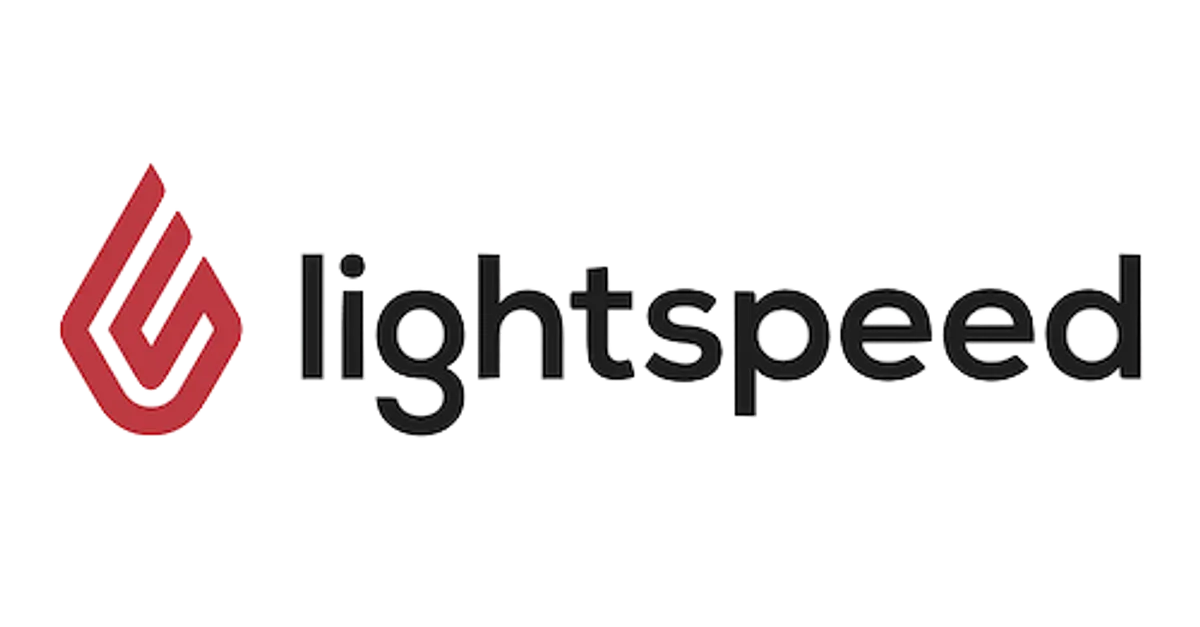
Pros
- Centralized employee management
- Built-in marketing tools
- Cloud-based accessibility
Cons
- Customer service issues
- Dependence on internet connection
Lightspeed Retail Pricing
Basic
$109/mo
- Registers
- Free training and onboarding resources
- Dedicated account manager
Core
$179/mo
- Lightspeed B2B
- Accounting
- eCommerce
Plus
$289/mo
- Omnichannel loyalty
- Advanced reporting
Key Features
- Cloud-based system with vertical-specific inventory management, ideal for apparel retailers with size and color tracking.
- Centralized employee management, including time tracking, permissions, and performance analytics.
- Built-in marketing tools like email campaigns, loyalty programs, and gift cards.
- Integrations for wholesale ordering and eCommerce platforms.
- Real-time reporting accessible remotely via cloud.
Pros
- Detailed inventory controls for specialized retail needs.
- Robust employee and marketing management features.
- Flexible cloud-based access for multi-location stores.
Cons
- Customer support can be inconsistent or slow.
- Relies heavily on stable internet, which may disrupt operations.
Pricing
- Basic: $109/month (includes registers, training, and account management).
- Core: $179/month (adds B2B, accounting, and eCommerce).
- Plus: $289/month (includes omnichannel loyalty and advanced reporting).
- Transaction fees: 2.6% + $0.10 for in-person, 2.9% + $0.30 for online; annual discounts available; hardware separate.
- 14-day free trial.
Shopify
Shopify POS is designed for omnichannel retailers. Its user-friendly interface provides seamless integration between online and in-store operations.
shopify POS overview
Unify your online and in-store experience with Shopify POS. This intuitive system lets you manage sales, inventory, and customers from a single platform.
Offer contactless payments, track trends with insightful reporting, and sync everything seamlessly with your Shopify online store.
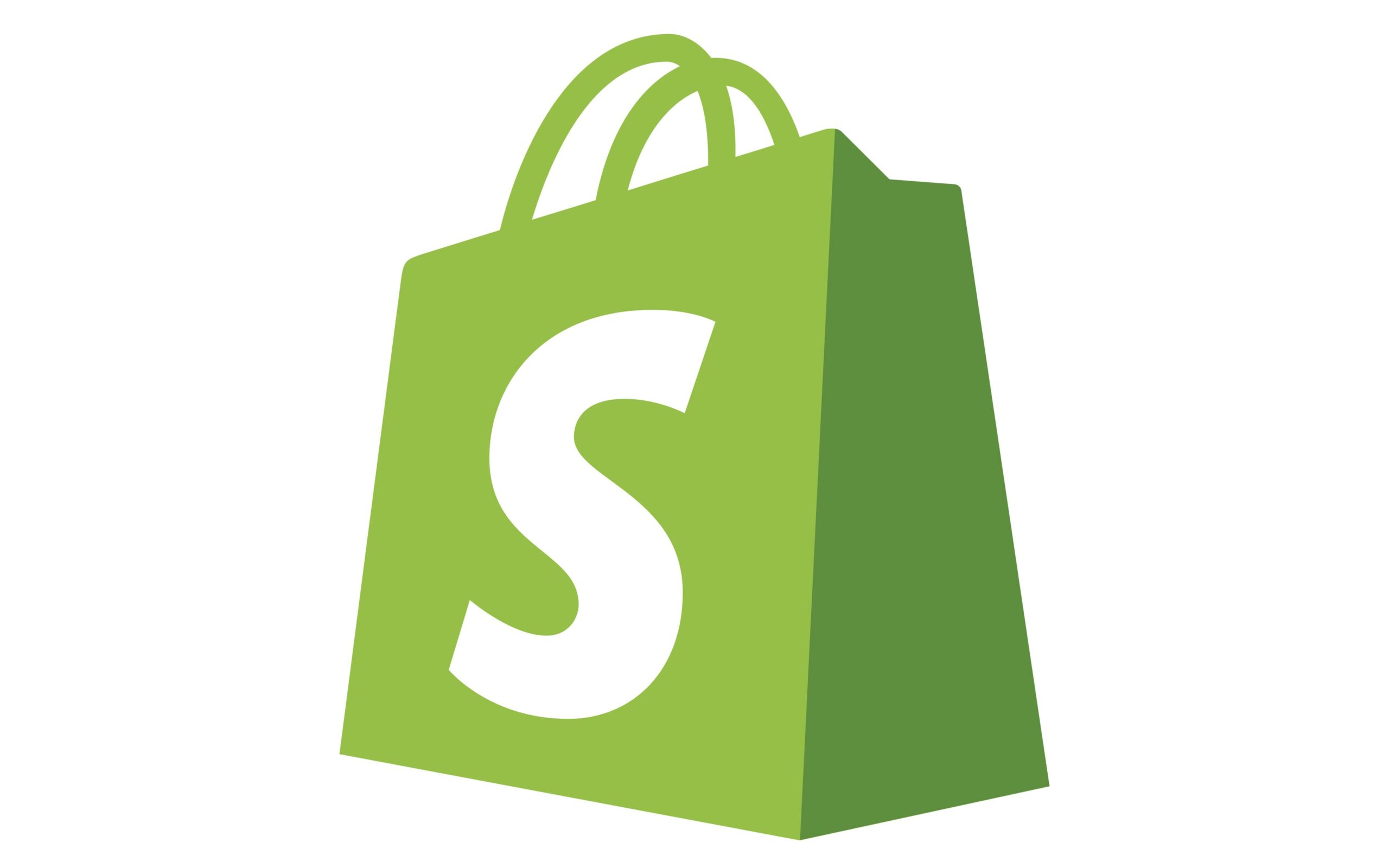
Pros
- Unified inventory management
- Effortless checkout options
- User-friendly interface
Cons
- Third-party processing costs more
- Built with omnichannel in mind
Pricing
Basic
$29/mo
- For “solo entrepreneurs”
- Shipping discounts
- 24/7 support
Shopify
$79/mo
- For “small teams”
- Additional staff logins
- Lower processing rates
Advanced
$299/mo
- For scaling a business
- Custom reporting
- Enhanced support
Plus
$2300/mo
- For “more complex businesses”
- Unlimited staff accounts
- Customizable checkout
Key Features
- Unified inventory management that syncs online and in-store stock with low-stock alerts.
- Flexible checkout options, including contactless payments, mobile POS, split tenders, and gift cards.
- User-friendly interface with minimal training needed.
- Omnichannel support for seamless integration between physical stores and eCommerce.
- Customer data management for personalized experiences.
Pros
- Excellent for omnichannel retailers with online/in-store sync.
- Intuitive and flexible payment processing.
- Scalable for growing businesses.
Cons
- Additional fees for third-party payment processors.
- May be overfeatured and costly for purely brick-and-mortar stores.
Pricing
- Basic: $29/month (for small operations, includes POS Lite and 24/7 support).
- Shopify: $79/month (adds staff accounts and lower card rates).
- Advanced: $299/month (includes custom reports and more staff).
- Plus: $2,300/month (for enterprise-level features).
- 3-day free trial; 25% discount on annual plans; hardware separate.
Toast
Toast is specifically tailored for restaurants, offering features like table and order management, mobile POS capabilities, and seamless integration with kitchen display systems (KDS).
Toast POS overview
Toast stands out as an excellent platform explicitly tailored for restaurants. It offers comprehensive features like table and order management, mobile POS capabilities for tableside ordering, and seamless kitchen display systems (KDS) integration.
These functionalities streamline operations, reduce errors, and enhance the dining experience.
With robust inventory management, online ordering options, and detailed reporting tools, Toast empowers restaurants to optimize efficiency, improve customer service, and make data-driven decisions to boost profitability.

Pros
- Inventory management built-in
- Integrated online ordering & payments
- Detailed reporting and analytics
Cons
- Mixed customer support reviews
- Contract required
Toast POS Pricing
Starter Kit:
$0/mo
- Reporting & analytics
- Menu management
- Toast invoicing
Core
$69/mo
- Toast mobile order and pay
- Toast delivery services
- Scheduling, powered by Sling
Build Your Own
Custom Pricing
- Payroll & team management
- Toast pay card and payOut
Key Features
- Mobile POS for on-the-go ordering and payments.
- Inventory management with low-stock alerts and cost tracking.
- Integrated online ordering and delivery options.
- Detailed sales reporting and analytics for trends and performance.
- Kitchen display system integration for efficient order handling (adaptable for retail workflows).
Pros
- Built-in inventory and online ordering tools.
- Comprehensive reporting for data-driven decisions.
- Scalable for businesses with order management needs.
Cons
- Customer support receives mixed reviews.
- Requires a two-year contract with potential early termination fees.
Pricing
- Starter Kit: $0/month (basic features; requires their processing at 2.49% + $0.15 per transaction).
- Core: $69/month (adds mobile ordering and team management).
- Custom pricing for advanced setups.
- Hardware varies (e.g., terminals, printers); processing fees 2.49%–3.69% + flat fee.
Loyverse
Loyverse provides a robust free POS system for managing inventory, sales, and basic customer data. The system can be used on a phone or tablet.
Loyverse overview
Loyverse offers a robust free POS system with features for managing inventory, sales, and basic customer data. You can use it on your phone or tablet, track sales trends, and even connect a receipt printer—all without paying a dime.
Upgrade for advanced features like employee management or integrations with other business tools.
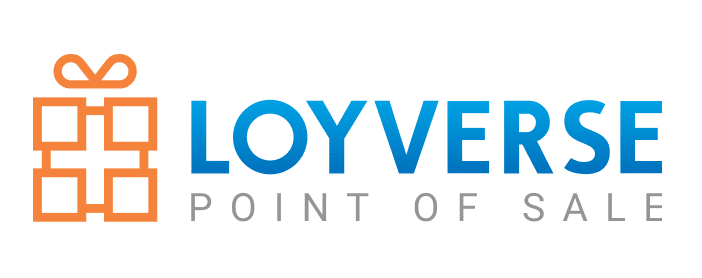
Pros
- Cloud-based accessibility
- Offline functionality
- Customer management
Cons
- Advanced features not free
- No phone support
Loyverse Pricing
Loyverse POS
$0/mo
- Runs on Android and iOS
- Multi-store options
- Sales analytics
Loyverse Add-Ons
$9 to $59/mo
- Employee management
- Advanced inventory
- Integration capabilities
Key Features
- Free basic POS with inventory tracking, sales processing, and simple reports.
- Cloud-based with offline mode for uninterrupted operations.
- Customer management for storing purchase history and contacts.
- Multi-store support and analytics for sales trends.
- Add-ons for advanced inventory and integrations.
Pros
- Affordable entry with a free core plan.
- Reliable offline functionality.
- Basic customer data tools for loyalty building.
Cons
- Advanced features require paid add-ons.
- Limited to chat support, no phone assistance.
Pricing
- Base POS: $0/month (includes multi-store and analytics).
- Add-ons: $9–$59/month (e.g., employee management $25, advanced inventory $25).
- 14-day trial for add-ons; annual plans include two free months; hardware separate.
Simplify Your Payment Processing with KORONA POS
This article has provided a detailed overview of Square’s POS fees and why they may not be ideal for retail stores. While Square is a popular choice that could work for some merchants, it’s essential to recognize that there are other options.
KORONA POS is an alternative that offers competitive pricing for a complete retail POS system and is an ideal choice for retailers looking for a more feature-rich solution with more transparent pricing. So, if you want to cut down on Square’s high fees and save money on your POS system, you can try KORONA POS now. Check out KORONA POS today and see what it can do for your business. Click below to get started.
FAQs
What are the fees for instant transfers with Square?
Square charges a 1.75% fee per instant transfer to a linked external bank account or debit card, with a minimum transfer amount of $25 after Square’s processing fees and a maximum of $10,000 per transfer.
How do I charge a 3% fee on Square?
To charge a 3% fee, such as a service or convenience charge, sign into your Square Dashboard, go to Settings > Account & Settings > Payments > Service Charges, and enable the feature to add a percentage-based charge during checkout. It can be applied manually per transaction or set as a taxable/nontaxable option, but it cannot be used for credit card surcharging due to card network rules prohibiting it on debit, prepaid, or Afterpay transactions. Consult legal counsel to ensure compliance with local laws before implementing.
Are there custom pricing options available for high-volume businesses?
Yes, Square offers custom pricing for high-volume businesses processing over $250,000 annually, tailored based on factors like processing volume, average ticket size, and seller history. These options can include lower transaction rates and bespoke plans to reduce overall costs. Contact Square’s sales team through their website to discuss eligibility and negotiate a package.


